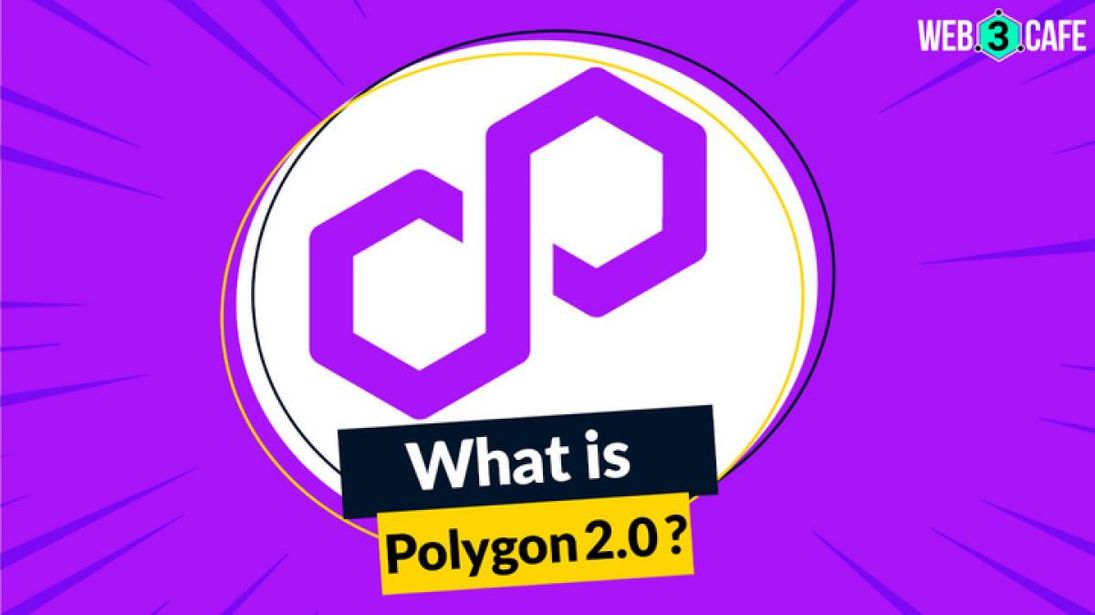
What is Polygon 2.0 & impact on its Blockchain and MATIC
The recent information on Polygon 2.0 is said to scale up Ethereum and blockchain by achieving unmatched scalability, liquidity, and security.
 blockchain
blockchain
Highlights
- Polygon 2.0 is designed to undertake the problems related to network struggles
- Polygon plans to use a new consensus algorithm, architecture and stack, token, and governance
- Polygon 2.0 plans to leverage zero-knowledge-powered layers.
The creators of Polygon [MATIC], Polygon Labs, have announced the release of its value layer of the internet called ‘Polygon 2.0.’ This revelation is said to allow anyone with access to the internet to develop and exchange information through its architecture.
"Polygon 2.0 is a set of upgrades that radically reimagine almost every aspect of the Polygon blockchain, from protocol architecture to tokenomics to governance," according to a statement posted on Twitter by Polygon Labs.
1/ Our vision for Polygon is simple: to build the Value Layer of the Internet.
— Polygon (Labs) (@0xPolygonLabs) June 12, 2023
The Internet allows anyone to create and exchange information. The Value Layer allows anyone to create, exchange, and program value.
Enter Polygon 2.0: a blueprint to build the ultimate Value Layer. pic.twitter.com/9eYSr3H1L5
It is a roadmap outlining on how Polygon will use ZK [zero-knowledge] technology, a cryptographic technique that allows one party, called the prover, to prove the validity of a statement to another party, known as the verifier, without revealing any additional information beyond the statement's validity to become the Value Layer, providing limitless scalability and universal liquidity.
“We will lay out a roadmap for how Polygon will become the Value Layer of the Internet, offering unlimited scalability and unified liquidity via ZK technology” as mentioned by Polygon Labs.
What's new in Polygon 2.0?
Polygon 2.0 is a network of ZK-powered L2 chains, unified via a novel cross-chain coordination protocol. This would feel like using a single chain for users, as the network is said to support unlimited chains and cross-chain interactions with additional security measures, post revealed.
Unlike Bitcoin and Cardano which focuses on solving problems off-chain (transactions that take place outside the blockchain), Polygon 2.0 is designed to undertake the problems related to network struggles, given the issue of staggered throughput limits or a number of transactions performed per second.
Polygon 2.0 to solve Ethereum and blockchain trilemma
As mentioned above, Polygon 2.0 is a significant milestone for the Ethereum scaling solution and is aimed to include additional chains without compromising on security and liquidity to solve Ethereum's scalability issues.
With the new version, Polygon will be able to take advantage of a network of layer-2 chains powered by zero knowledge and novel cross-chain coordination mechanism. This protocol enables cross-chain interactions similar to surfing web pages on the conventional internet and allows users to move across an infinite number of chains.
With this mechanism, Polygon looks to solve the blockchain trilemma, achieving unmatched scalability, liquidity, and security. Polygon 2.0 strives to reshape the current blockchain infrastructure to better resemble the familiar and infinite landscape of the conventional internet.
Additionally, Polygon plans to use a new consensus algorithm, architecture and stack, token, and governance in the coming weeks, which is yet to be announced by the development team soon. Holistically, Polygon hopes to make Ethereum the base value layer for web3 by enhancing its capabilities..
“At its core, Polygon 2.0 will unify protocols, providing ‘seamless usage’ across zk-Ethereum Virtual Machine tech, proof-of-stake, and supernets, making it ‘feel like you are using a single chain,” shared by Polygon Labs president Ryan Wyatt on Twitter. Additionally, he also mentioned ‘Token evolution’ and ‘long-term decentralised governance’ as some of the highlights of the technology.
Can Polygon 2.0 address the declining traction of MATIC?
The Polygon zk Ethereum Virtual Machine (zkEVM) beta version which was released in March 2023 could not reach its peak of adoption and led to the criticism on its launch, along with several others choosing to participate for the activity of different ZK rollups, such as zkSync Era.

In addition to the underwhelming adoption of Polygon's zkEVM, the growth of MATIC (Polygon's native cryptocurrency) network reduced to $25,200 despite of garnering profits in first few days of June. Recent data from Santiment, a behaviour analytics platform for cryptocurrencies, claims that MATIC has had a difficult time gaining a good reputation within the cryptocurrency industry.
Moreover a negative impact on MATIC's social volume could also be seen, with its metric declining persistently. However, a rise in active addresses followed the announcement of Polygon 2.0 recently. The current MATIC active addresses increased to $283,000 at the time of writing.


COMMENTS 0